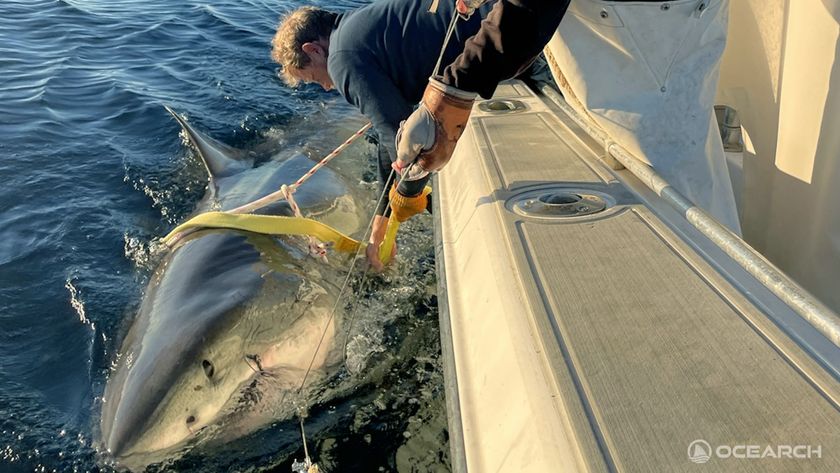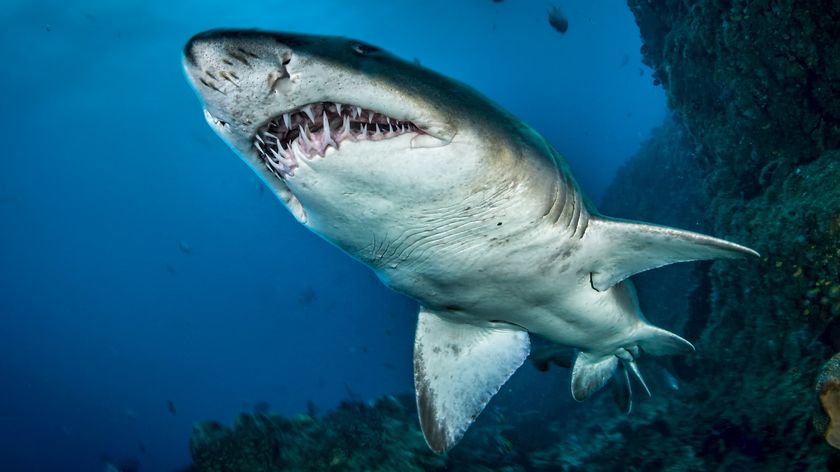See the World Through a Glowing Shark's Eyes
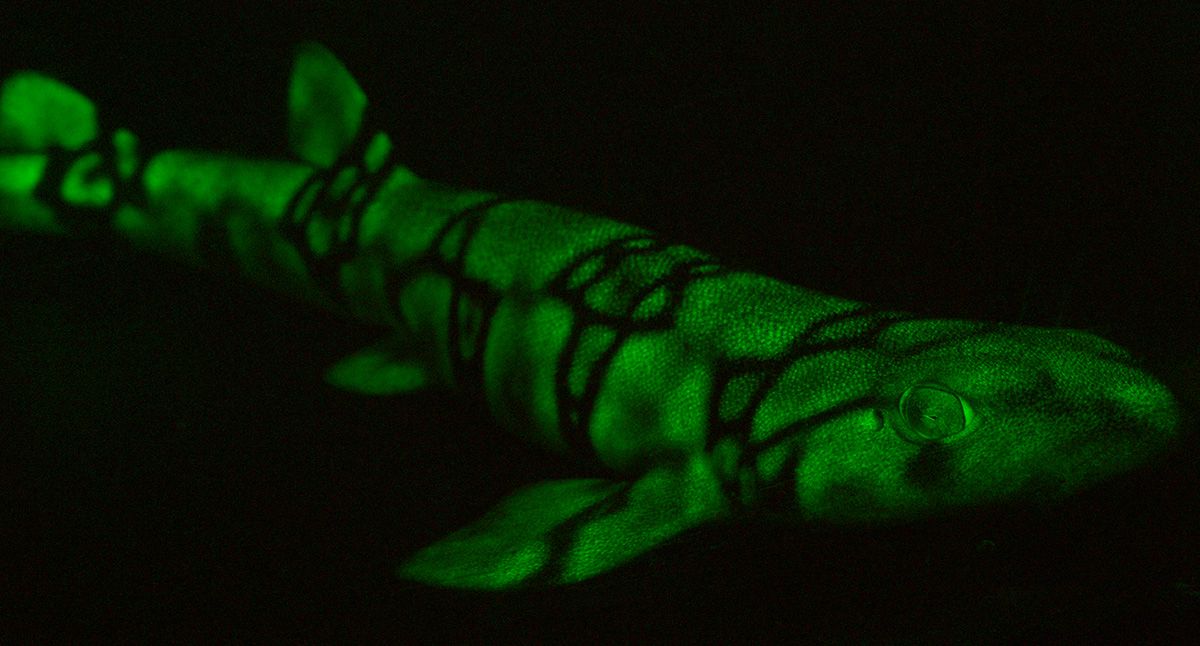
How do you get noticed in the depths of the ocean where light barely penetrates? If you're a catshark, you get your glow on.
Two species of catshark, the swellshark (Cephaloscyllium ventriosum) and the chain catshark (Scyliorhinus retifer) have fluorescent skin proteins that absorb blue light and re-emit lower-wavelength green light, according to a new study. To reveal these sharks' hidden patterns, researchers built a special "shark-eye camera" that shows what the world looks like through the eyes of the two species.
"It's really the first time this has been done," said study leader David Gruber, a marine biologist at Baruch College in New York. He and his colleagues discovered that the sharks could see each other's fluorescent patterns, hinting that the animals might be using those patterns to identify each other or to communicate, Gruber told Live Science. [Gallery: See Images of the 'Glowing' Catsharks]
Glowing sharks
Fluorescent proteins in animals — known as biofluorescent proteins — were first discovered in bioluminescent jellyfish in the 1960s. In the tiny crystal jelly (Aequorea victoria), a protein dubbed green fluorescent protein absorbs the pure blue light created by the jellyfish and re-emits it with a green twist. Later, corals without bioluminescence were also found to contain green fluorescent protein, Gruber said. (The difference between bioluminescence and biofluorescence has to do with the source of the light. Bioluminescence is light created by the animal itself; biofluorescence is external light absorbed by the animal and re-emitted at a different wavelength to change the color.)
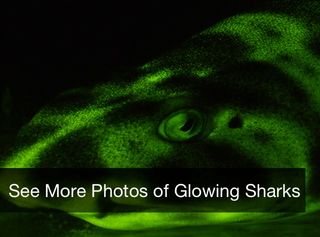
"In 2014, we published a paper showing over 180 new species of fluorescent fish, and that included two species of shark," Gruber said. He has since given a TED talk on the discoveries, which also included a fluorescent sea turtle. [See images of the fluorescent species that Gruber discovered.]
It makes sense that ocean dwellers may find fluorescence handy, Gruber said. Color disappears in the deep; blue wavelengths are the only ones that penetrate very far down. Red, for example, can't make it through more than about 32 feet (10 meters). Fluorescence would allow fish to take the blue light of their environment and turn it into other colors. But this trick would only work if the sharks could actually see these longer-wavelength hues, Gruber said.
Sign up for the Live Science daily newsletter now
Get the world’s most fascinating discoveries delivered straight to your inbox.
Shark's-eye view
So Gruber and his team set out to see the world through the eyes of a catshark. Cornell University physiologist Ellis Loew analyzed photoreceptors in the eyes of the two species. He discovered that both species of catshark had just one kind of rod, a low-light photoreceptor that detects light with wavelengths around 480 to 490 nanometers, right on the cusp of blue and green.
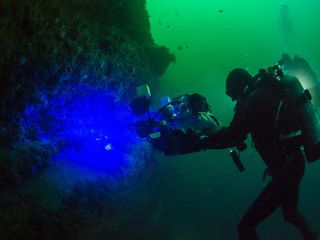
With this information, the researchers built a camera that records the same wavelengths, essentially letting the scientists swim through the sharks' territory, seeing the world as the sharks do. They found that the fluorescence heightens the contrast between the sharks' bodies and the background, making them more visible at depths of 80 to 130 feet (24 to 40 m). Then, the researchers created a computer model to gauge what would happen even deeper in the ocean, where less light penetrates. As the background became darker blue, they found, the more the sharks' fluorescence would stand out.
The effect, Gruber said, is "almost like these twinkling, star-like displays on the sharks." This preliminary look suggests males and females might have different fluorescence patterns, he said.
"It opens up lots of behavior questions, in terms of how they're using it," he said.
The next step, Gruber said, is to create an even more customizable shark-eye camera — one that will let researchers adjust it based on the visual capabilities of any animal. He hopes a side effect of the project will be increased empathy for animals that can seem very alien.
"It's research that draws us, as humans, closer to the species," he said.
The findings were published online April 25 in the journal Scientific Reports.
Follow Stephanie Pappas on Twitterand Google+. Follow us @livescience, Facebook& Google+. Original article on Live Science.

Stephanie Pappas is a contributing writer for Live Science, covering topics ranging from geoscience to archaeology to the human brain and behavior. She was previously a senior writer for Live Science but is now a freelancer based in Denver, Colorado, and regularly contributes to Scientific American and The Monitor, the monthly magazine of the American Psychological Association. Stephanie received a bachelor's degree in psychology from the University of South Carolina and a graduate certificate in science communication from the University of California, Santa Cruz.
